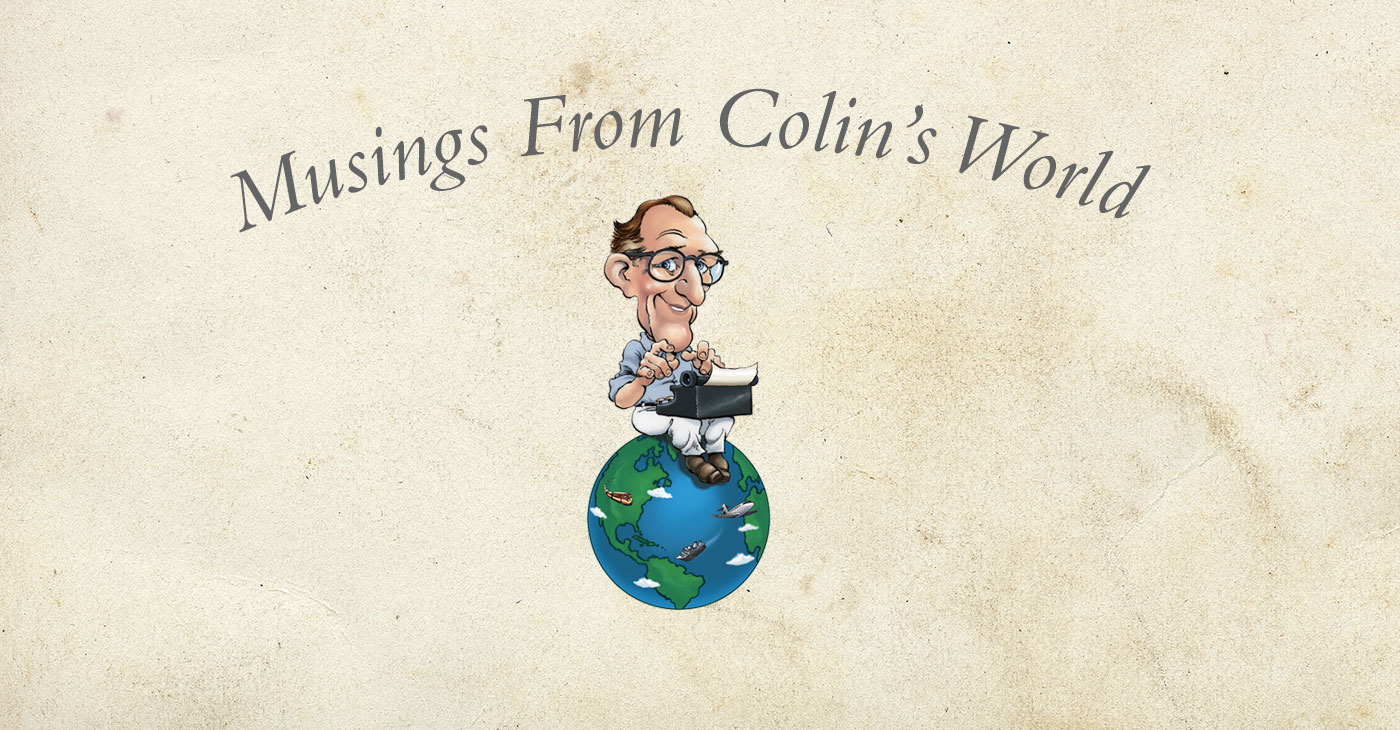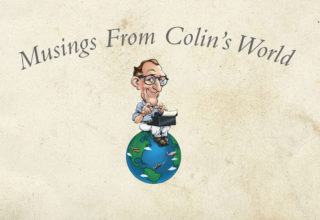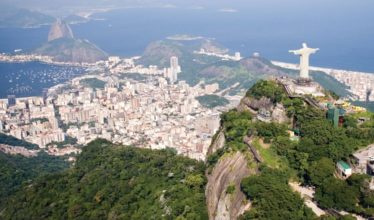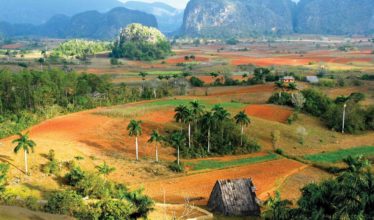There is arguably no more exotic destination for an American traveler than Cuba. You can get on a plane in Miami and in less than an hour step off into a world that is so removed from what you left behind it seems like another planet.
It hits you immediately. When you walk out of the Havana airport you start to see American cars from the late 1940s and 1950s, big round Chevys, Fords, Buicks and Oldsmobiles, some of late ‘50s models with elaborately sculptured fins. They are monumental, like museum pieces that escaped and are parading themselves around for the convenience of people who don’t have time to go to the museum.
The antique cars are still running around the streets of Havana in various states of decomposition and patching together. They are strangely colored, often with mismatched panels, odd protrusions or pieces missing. It is practically a miracle that the ingenious Cuban mechanics keep them running decades after automobiles of that vintage disappeared from the streets in the country of their origin.
There are not just a few of these gems. There are hundreds, maybe thousands. They are everywhere, a constant presence from the moment you arrive in Cuba till you leave. They account for about a third of the cars on the streets. It seems like more because they are the ones that get your attention. They make the newer cars blend into obscurity and monotony. They are a big part of the feeling of being in Cuba and what makes it strikingly different from any other place.
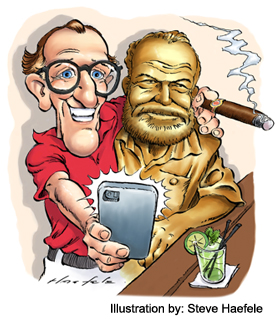 From that first stunning encounter with the cars in the Havana airport parking lot I passed into a state of enchantment and stayed that way until I left Cuba. When I think of it now I slip back into that enchantment through my memories.
From that first stunning encounter with the cars in the Havana airport parking lot I passed into a state of enchantment and stayed that way until I left Cuba. When I think of it now I slip back into that enchantment through my memories.
Commercial-Free Cuba
The second thing I noticed after the cars was something that was not there, but was conspicuous in its absence: advertising and commercial logos. In my world corporate logos and advertising media are ever present, like air. So to have them suddenly absent was itself a silent but stunning impression.
In Cuba you might occasionally see a state-sponsored billboard. But the place is virtually devoid of the commercial overlay I am used to seeing almost everywhere I go in the world.
How many places have you been where you do not see a Coke logo? Antarctica? Okay. Where else? MacDonald’s and KFC are huge in places as remote and culturally distinct from America as China and Africa. But in Cuba there is an almost breathtaking silence in the absence of commercial messaging. It’s truly a different world.
It’s almost as if you are in a place where the second half of the 20th Century did not happen. And in a sense it didn’t. Certainly Cuba did not experience the same century that we experienced in mainland North America. It took a separate historical path and ended up in a different place. It is an alternate reality.
Americans returning from Cuba often say it was like stepping into a time machine, and that is true in a way. It is as if a giant laboratory experiment was performed to show how history would have gone with a different set of assumptions.
The Cuban Musical Universe
Another thing that struck me almost immediately in Cuba was the almost constant presence of music, usually performed live. Cubans are not hooked into electronic media as we are in the states. Cuban children do not go around locked into iPhones and iPads. Cubans don’t have the access to consumer goods that Americans have. Internet access is very limited. So the lives of children are very different from the lives of American children.
What Cuba does have is music, real live music, produced by human beings playing instruments and singing, everywhere.
In Cuba music is present in practically every environment you encounter. Cuba lives and breathes music. Music is an essential part of the Cuba experience, ubiquitous, enriching the atmosphere.
Hemingway’s Cuban Connection
Because of the political troubles and the embargo, Cuba was almost blacked out of the map for Americans. But some of Cuba’s colorful history and culture occasionally slipped through and we heard of exotic associations such as rum, cigars, salsa and rumba and the nightclubs and casinos of historic Cuba. But one thing that you don’t hear about much until you are in Cuba is Ernest Hemingway.
In America we think of Hemingway as ours, the quintessential American writer, journalist, adventurer. We think of his early days as a reporter in Kansas City, his participation in the Spanish Civil War and his years as an expatriate in Paris. But how often do we think about the fact that he made Cuba his home for the last 20 years of his life?
The Cubans are very proud of their association with Hemingway. He lived in Cuba from 1939 till 1960, about a year before his death. He wrote seven books there, including The Old Man and the Sea and A Moveable Feast.
Hemingway’s connection to Cuba goes back even farther. From 1932 to 1939 he spent his winters in Cuba at the Hotel Ambos Mundos in his own special room, 511. That was where he wrote For Whom the Bell Tolls, based on his experiences during the Spanish Civil War. Castro said he learned some things about guerrilla warfare from reading the book.
You can visit Hemingway’s house, Finca Vigia, in San Francisco de Paula, nine miles outside of Havana. It is now a museum. But you can also do some Hemingway tracking without leaving Havana by visiting the bar that is historically known as his “favorite watering hole.” It’s called Floridita.
I visited Floridita, which does a flourishing business largely on the strength of the Hemingway connection. There was a lively band set up almost in the doorway the night I was there, so you practically had to walk through the band to get to the tables. Best of all, Floridita was Hemingway’s favorite bar.
The sense of his presence is enhanced by a statue of him at one end of the bar, where he is said to have always stood. For me, standing at the bar where Hemingway often stood a half century ago next to a statue of him was a strange, thought provoking experience.
I had to take a selfie with Ernesto as a souvenir, of course. Wouldn’t you?
The wondrous experiences I remember about my travels in Cuba are endless. There are far more than I can even mention in an article of this size. There are worlds upon worlds to discover in Cuba and the first waves of American tourists are just getting the introductory version so far. Outside of Havana are universes far beyond our current imaginings.
The new wave of privately owned restaurants and inns is an exciting new dimension of Cuba as the government opens up new avenues of private enterprise to the very enterprising Cubans. It is going to be amazing to see the ingenuity of these resourceful people unleashed.
The ornate colonial buildings in Old Havana are the highlight for many. With the new wave of investment capital coming into the country now, those buildings will change. The Cuban government will no doubt protect its historic treasures, but it will change. Many of the changes will be welcome not only to visitors but to locals. But what you see there now will not stay the same. It’s one of many reasons to get down there as soon as possible.
The Cuban Musical Universe Part II
As I write this my iPod is shuffling through a playlist made from CDs I bought while traveling around Cuba. When the music washes over me I am swept back into rich, warm memories of Cuba.
It is hard to even begin to express the musical richness of Cuba. Music in Cuba is ubiquitous. Its spirit moves in the sultry tropical air and animates the people on the streets.
Almost everywhere you go you see musical performers, and many of these enterprising musicians will have a CD of their music to sell. I brought home a rich library of Cuban music in a wide range of styles from orchestral music to folky mariachi bands, jazz combos and big salsa bands.
Now I have a great library of Cuban music to listen to. It’s got the grassrootsy feeling of having been produced by individual musicians I met while touring around. Now when I hear the music I can enjoy the knowledge that I made a little contribution to the livelihood and career of the Cuban musicians whose music I bought.
Go Now. Go Often.
There are many places in the world where you can travel today where you will shudder as you feel your fundamental world view shift. Once the shift is made in your frame of reference, you will never return to the person you were. It’s true, whoever said it, that once the mind is stretched to accommodate a new idea, it can never be shrunk back to its former dimension.
Opportunities for world-shifting experiences exist all over the world, but there is no other place where you can get the kind of shift you will experience in Cuba. Visiting Cuba is one of those marking points that you will look back on and realize that you never saw the world the same after that experience.
In regard to Cuba, my advice is go. Nowhere is the axiom more true than with Cuba. You never know how long you will be able to go. It has been opened and closed again in the past. It’s a function of politics. It’s unpredictable.
Go as soon as you can. And then go again later. There are innumerable layers to discover. Cuba really is another world, an enchanted world. And it will immeasurably enrich your world.
So on that note, I bid you good day and best wishes for the approaching spring.
Your humble reporter
A. Colin Treadwell
